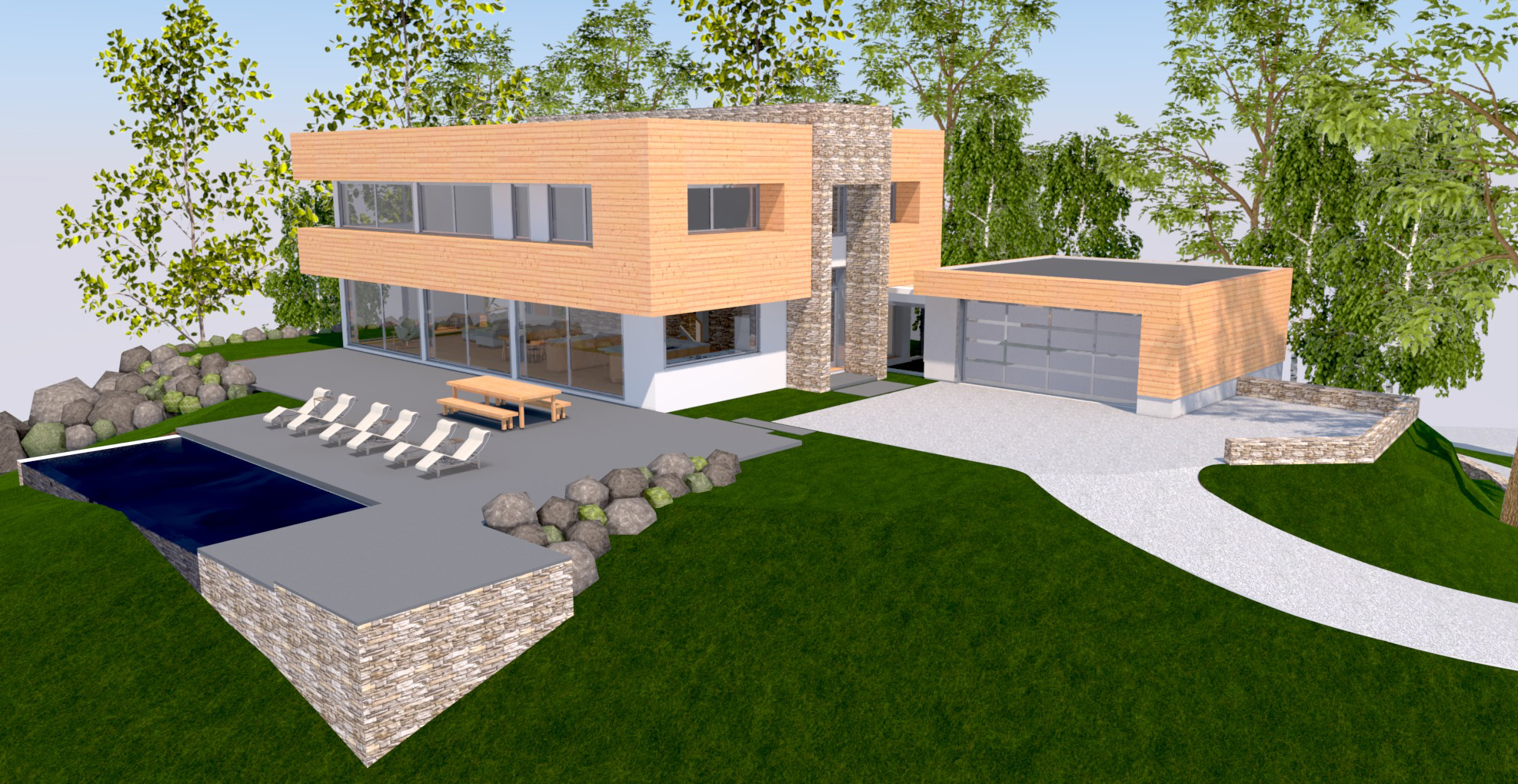Why and How Do Architects Charge Percentage-Based Fees?
(our most frequently asked question):
"How can architects justify a percentage-based fee? So, like, if I buy a really expensive refrigerator, my architects' fee goes up? How do they get away with that?!"
The answer to this question is multi layered and actually depends on how "high end" the job is.
First of all, most people (unless they are quite wealthy) tend to buy their own refrigerator and have it shipped to the job site where the contractor installs it. The cost of the refrigerator is never a part of the construction cost (only the cost of labor to install it is). Therefore whether the cost of the refrigerator is high or low, it has no impact whatsoever on the architect's fee. This is true of many things like lighting fixtures, tile, paint, etc.
However some things that are more high end do change the cost of the labor on the job. For example if you buy a very specially sized refrigerator that requires unique installation and front and side panels to match the millwork, this usually makes the contractor's cost of installation go up and then the architect's fee goes up. But what does that have to do with the architect? If you buy such a special refrigerator, the architect has to plan the refrigerator's installation much more carefully, design cabinets to surround it more specifically and design the panels that go on the surface.
The same is true of many materials, such as specialty tiles. The installation is typically more involved, and the architect must include detailed tiles layouts in the construction drawings (the architect just can't write a note saying 'install tile x', the architect has to show in drawings, and sometimes specialized written specifications, just how to install that tile.)
Or sometimes, if the client would prefer to pass the job of shopping for and arranging shipping for their appliances to someone else, the architect can take on the task and have the contractor arrange for payment and shipping to the job site. In each case, this involves extra time and work for both architect and contractor. If each were getting paid by the hour, this time would factor in as a number of hours for each.
The bottom line is that almost everything that complicates a job or adds time spent for the architect adds to the fee, as it should. The only way architects make money is by billing for time spent.
The same is true of changes. A client once asked why the contractor and I kept billing for changes made in the field. After I pointed out that it was clearly part of his signed contract, (We were working with a fixed fee for this client and billing hourly for changes in the field) I explained that changes (significant ones) are often more costly to make after construction is started. Things have to be re-arranged and often re-arranged in a hurry. The scheduling of subcontractors, wiring, plumbing, HVAC, millwork, etc. is all a dance of timing. If a change comes in the middle, everybody has to stop and often undo work, delay progress, and re-schedule tasks. This means more work for everybody—primarily the architect and general contractor, who have to arrange it all.
I often use the analogy of buying a car. Let's say you ordered a brand new car, custom, just for you, and the shop told you that you would have it in two weeks. Then, if after one week you called them and said you changed your mind—you actually do want that sunroof and the on-board GPS systems after all, this would most likely delay and definitely add to the cost of the car. It would probably end up costing you more than it would have if you had ordered it all up front because they have to go back and re-work the car already in progress.
Architects are not like interior decorators—we do not get a fee on top of each purchase we make for a client. (99% of the time we don't buy anything for a client.) Contractors bill the same way architects do, it is simply harder to see because they often spread the cost out throughout the various phases of construction or deliveries of materials. Some contractors show the number separately as a 'construction management fee' and it is often about 15-20% of the construction cost.
Designing a house or a renovation project is extremely complicated. A lot of balls need to be kept in the air at once. It is hard work and involves a lot of concentration and worry. Good architects care deeply about the jobs they work on and make their best effort to do excellent jobs. Same goes for good contractors. We all put in a lot of time and effort.
At Trillium, we do not nickel and dime over the percentage-base fee. You may sign a contract for a $1,000,000 construction cost, and our fee would be calculated based on that number. If, through the course of construction, your construction cost jumps to $1,067,896.23 because you decided you wanted additional millwork in the living room and another bathroom renovated, our fee will go up. But it will go up to 15% of maybe $1,060,000.00; we are not trying to milk you for every penny, but we did do a lot of work on that millwork package and the design of that bathroom.
Percentage based fees are the oldest, most tried and true way that architects have found to bill for their work. It is not a precise science but the way it works in its 'relative' relationship with construction cost seems to be the most fair way to bill without tracking every hour. We track our hours anyway (in house) but find that the constant analysis of hours by ourselves and clients is time consuming and like I said before - people usually find it very hard to believe that it all takes as long as it does. But it does - it really does.
We hope this helps you to understand the percentage-based fee, but please ask us questions at any time!
For more insight into how architects calculate fees, read these two articles from the blog Life of an Architect:
Architectural Fees, Part 1
Determining architectural fees are a mystery to most, and that includes architects. As a group, architects are terrible at charging for professional services...
Architectural Fees, Part 2
Today we are talking about the specifics of fee structures and how important it is that everyone have “some skin in the game”...
















